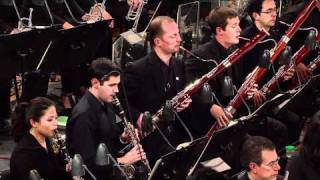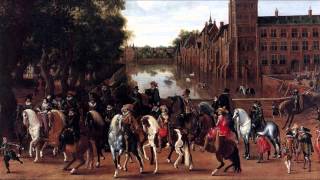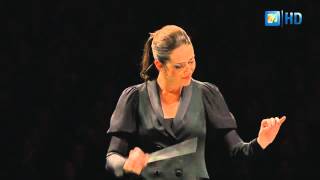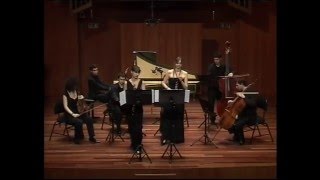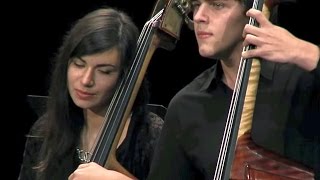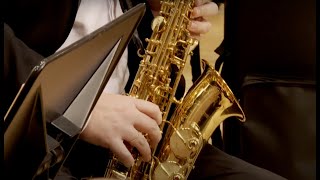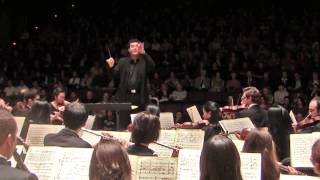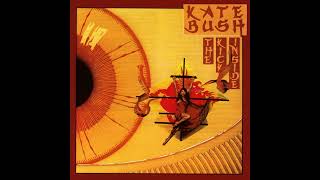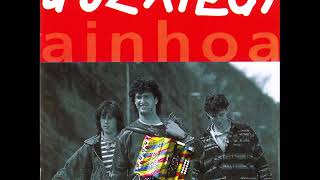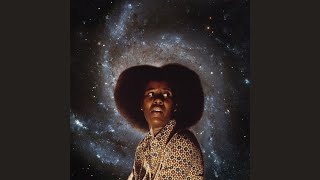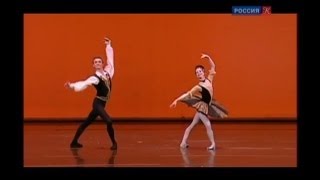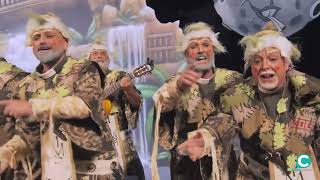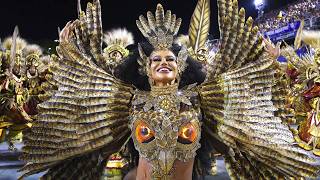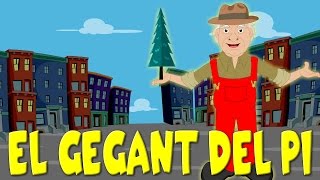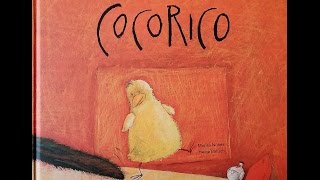Carnival Sunday is celebrated on February 19.
Recommended music videos for initiation to classical music
Hector Berlioz (1803-1869) was a French composer, an eminent figure in program music and romanticism in general. His father, a doctor, sent him to Paris to study medicine; but he abandoned medicine and enrolled in the Paris Conservatoire where he studied composition. From here to Rome where, while on a scholarship, he wrote several operas, symphonies, overtures, various songs and choral works. He took notice of the hymns of his teacher, Jean-François Lesueur , and did a lot of imitation of Beethoven , then unknown in France ; also Gluck, Mozart, Étienne Méhul and Carl Maria von Weber. In 1844 he composed the first known work for saxophone, the Canto Sagrado sextet, which was premiered under the baton of Berlioz himself and with Adolphe Sax on saxophone.
Overture is the instrumental introduction to an opera or other dramatic work, musical or not, although some independent instrumental compositions of the 19th and 20th centuries were also called overtures by their composers. The first operas dating from the early seventeenth century , did not have overtures but an introduction made by the vocalists in which they made a summary of the action that was going to take place immediately afterwards. Instrumental introductions began to be used regularly in the mid- 17th century ; the German composer Christoph Willibald Gluck was one of the first to use material from his operas for overtures. In this way, they established the emotional profile of the opera that followed.
The Roman Carnival overture, which we are suggesting today, is actually the prelude to act II of the opera Benvenuto Cellini ; opera that had a lamentable acceptance both in its debut and in the two subsequent performances that were made during the composer's lifetime; so he decided to present it as an independent work in 1844, obtaining a resounding success. Today we offer it under the baton of Michael Tilson Thomas (1944) pianist, composer and important American conductor.
Georg Philipp Telemann (1681-1767) is a German Baroque composer, a contemporary of Bach and Handel , considered the most prolific in history. A self-taught musician, at the age of twelve he began to compose against the will of his mother, who did not see a peaceful future in a musical career; However, Telemann , with a kind character and an enormous capacity for work and perseverance, continued in his efforts. He learned to play, single-handedly, countless instruments, while on his frequent travels he became familiar with different styles of composition. After spending a few years in various positions in Leipzig , Żary (Sorau in German) and Eisenach ; in 1721 he was appointed musical director of the five largest churches in Hamburg , where he would spend the last 47 years of his life.
Suite (French voice) is a musical form composed of several short instrumental movements of a dance nature. Its origin is found in the contrasting pairs of dances of the Renaissance (1300-1600). During the Baroque (1600-1750) it was one of the most important musical forms and is considered one of the first modern-type orchestral manifestations. At the end of the Baroque , the suite was already a sophisticated musical form that mixed several dances in different keys, contrasting different thematic materials and restating them in its finale; structure that announces, in short, the origin of the sonata . At present, the suite is understood more as a symphonic composition freely articulated by several episodes of a similar nature.
Today the Akademie für Alte Musik Berlin , with maestro Stephan Mai in his dual role of concertmaster/conductor, offers us a selection of orchestral suites from the more than 100 suites that Telemann wrote.
Francisco Tarrega (1852-1909). He was a virtuoso guitarist and composer (“el Sarasate de la guitarra”), born in Villarreal (Castellón), whose childhood was marked by an accident, when he fell into a ditch due to the carelessness of the girl who took care of him, and his impaired sight. His father, fearing that he would go blind, moved to Castellón so that he could attend music classes and earn a living as a musician. Later, in 1874, he entered the Madrid Conservatory , where he studied composition with Emilio Arrieta . By the age of eighteen he was already giving guitar classes and regularly offering concerts. From 1880 he began his international tours, visiting cities such as Paris, Lyon or London , while his recitals throughout the state were innumerable.
Tárrega was interested in combining the romantic tendency that prevailed in classical music with the Spanish popular elements. He is considered the creator of the foundations of 20th century classical guitar technique and the growing interest in the guitar as a recital instrument. He died on December 15, 1909 in Barcelona due to a stroke at the age of 57.
Today we offer Recuerdos de la Alhambra , one of his most popular works and written for solo guitar after a trip to Granada and its Alhambra , whose incessant tremolos (each note is played repeatedly quickly) remind us of the whisper of its sources with the symbology of water present at all times. The execution is in charge of Sharon Isbin , American classical guitarist, praised for her lyricism, precise technique and versatility, she is one of the first interpreters of classical guitar in the international arena.
Arturo Márquez (Sonora, México 1950), is a Mexican composer recognized for using Mexican musical forms and styles in his compositions. His family moved to Los Angeles in 1962; three years later, at 16, he began studying violin, tuba, trombone and piano, beginning his first compositions with intuitive harmony accompaniment. In 1967 he returned to Navojoa (Sonora) to direct his Municipal Music Band . From 1970 to 1975 he studied piano at the National Conservatory of Mexico and in 1976, composition at the National Institute of Fine Arts ; In 1980, at the end of said workshop, the French government granted him a scholarship for improvement in Paris for two years. In 2009 he was awarded Mexico's National Fine Arts Award .
El Danzón No. 2 is a musical work for symphony orchestra composed by Arturo Márquez and premiered on March 5, 1994. Influenced by the danzón, popular rhythms and Mexican concert music , it is the most outstanding of the series of nine danzones, and became a recurring piece in the interpretation of symphony orchestras from Mexico and the world. On its twentieth anniversary, the Mexican government recognized Danzón No. 2 as "the second most famous work of Mexican concert music, only behind José Pablo Moncayo 's Huapango ." most profoundly genuine faces of today's music"
Today it is offered to us by the Philharmonic Orchestra of the Americas under the direction of Alondra de la Parra (1980), an internationally renowned Mexican orchestra conductor who is currently head of the Queensland Symphony Orchestra and who has been the first woman to perform a position of this entity in Australia .
Recommended classical music videos
Antonio Vivaldi (1678-1741) was an Italian priest, violinist, and composer known as the red priest (“il prete rosso”). He was born in Venice and as a child learned to play the violin from his father; at the age of 15 he entered the Seminary and once ordained a priest, he could barely attend to his religious obligations due to his health problems; so he was appointed violin teacher in an orphanage where he taught theory and instrument classes. At the age of 40, he was appointed Chapel Master in Mantua where he wrote his famous Four Seasons . From there he moved to Milan , then to Rome ; later, again to Venice and finally, to Vienna where he would die. Throughout his life he composed almost 800 works, of which half were concerts, 40 operas, 60 religious works and numerous sonatas.
The Concerto is a musical form written for one or more solo instruments accompanied by an instrumental ensemble. It was Vivaldi who established the fundamental bases of its structure with three movements ( I fast-II slow-III fast ) and presented as a dialogue between the soloists and the instrumental ensemble. Starting from classicism, especially from the bases created by CPE Bach , the first movement is built following the patterns of the sonata form (exposure, development, re-exposition) , while the second and third movements adopt free and punctual forms. Frequently, at the end of the first and/or third movement, the soloists have a cadence without orchestral accompaniment with which they can show off their virtuosity.
Today we offer Vivaldi 's Concert for two oboes, strings and continuo performed by the young students of the Reina Sofía School of Music .
Camille Saint–Saens (1835-1921) was a French pianist, organist, composer and soldier, committed to the French musical renewal, as well as teaching; Students such as Fauré and Messager passed through its classrooms. He was a precocious child who at the age of 11 made his first public appearance with works by Handel , Mozart and Beethoven . At the age of thirteen he enrolled in organ and composition at the Paris Conservatoire and at eighteen, he composed his first symphony. He was a multifaceted intellectual: musician, writer, mathematician, philosopher, archaeologist, geologist, botanist... Just as multifaceted as his numerous musical works (more than 400) in which he addressed all kinds of genres, among which it is necessary to highlight the novelty that in That moment meant film music .
The Carnival of the Animals , which we offer today, is a musical suite composed by Saint-Saëns in 14 movements for a small chamber ensemble; The work was raised as a joke for a carnival day; so lions, chickens, turtles, kangaroos, donkeys and various other animals appear; all this with different touches of humor, sometimes with themes by other authors that Saint-Saëns places in a very different context and contrasts with the original situation.
His movements are as follows: 1 (0´48´´) INTRODUCTION AND ROYAL MARCH OF THE LION .-. 2 (3´00´´) HENS AND ROOSTERS .-. 3 (3´53´´) ASSES, WILD ANIMALS .-. 4 (4´41´´) TURTLES .-. 5 (6´36´´) THE ELEPHANT .-. 6 (8´06´´) KANGAROOS .-. 7 (8´58´´) AQUARIUS .-. 8 (11´24´´) CHARACTERS WITH LONG EARS .-. 9 (12´14´´) THE CUCÚ IN THE BACKGROUND OF THE FOREST .-. 10 AVIARY (in the version that we offer today, this number does not appear) .-. 11 (14´36´´) PIANISTS .-. 12 (16´09´´) FOSSILS .-. 13 (17´38´´) THE SWAN .-. 14 (20´49 ´´) FINAL
The suite is today conducted by the Polish teacher Małgorzata Sapiecha-Muzioł.
Sergei Rachmaninoff (1873-1943) was a Russian pianist, conductor, and composer born into an aristocratic family of musicians; He began playing the piano at the age of four, formalizing his studies at the Saint Petersburg Conservatory and later at the Moscow Conservatory. After the premiere of his First Symphony and the criticism received, he suffered a creative crisis for four years. Once surpassed, he wrote the Piano Concerto No. 2 , which received worldwide recognition. After the Russian revolution, he moved with his family to Switzerland and, in 1935, to the USA , writing numerous works for piano solo and concertante, chamber music, symphonic and lyric. He is considered one of the most influential pianists of the 20th century and one of the most representative Russian composers.
Symphonic Dances , Op. 45, is an orchestral suite in three movements. Completed in 1940, it is the last composition by Sergei Rachmaninov . The work is fully representative of the late style of the composer with its curious, shifting melodies, similar to that of Prokofiev , as well as the grotesque central movements and the color focus of each instrument throughout the work (highlighting the use of the alto saxophone in the first dance ). The Dances evoke a nostalgia for the Russia he knew, as well as his lifelong fascination with ecclesiastical themes.
Hungarian maestro György Ligeti (1923-2006) was one of the most influential composers of the 20th century , popularized above all by film director Stanley Kubrick who featured him for the soundtrack of the 2001 films A Space Odyssey, The glare and Eyes Wide Shut . Romanian of Jewish parents, he grew up in Hungary where he was conscripted into the Hungarian army in 1944, freeing him from Nazi “cleansing”. He studied in Budapest with Zoltan Kodaly and Sándor Veress . After the European war, avant-garde music was banned in Hungary while he secretly listened to it on the radio. So as soon as he could, he moved to Austria where he became a national and connected, among others, with Stockhausen and Koenig with whom he worked on electronic music and serialism .
Lontano , the orchestral work that we propose today, was written in 1967 and in it the attention falls, more than on the height and duration of the sounds, on their timbre richness and their dynamics. According to Ligeti himself "what is written is polyphony although what is heard is harmony". Curiously, the one who today conducts this orchestral work without percussion is the Brazilian percussionist and conductor Eduardo Leandro .
Recommended music videos for all tastes
The origin of the Carnival seems to come from the festivities that were celebrated in the Roman Empire in honor of Bacchus , god of wine and parties, to celebrate the arrival of spring. In Western culture, Carnival is associated with Catholicism, since Lent begins with Ash Wednesday , after which comes Holy Week ; all of them days of recollection and penance. In this way, knowing what is coming, the last holiday is celebrated, Shrove Tuesday ; party that begins the previous Thursday, called Jueves Lardero or Fat Thursday . The characteristic of these days basically consists of the celebration in the street of a festive and collective debauchery expressed in costumes, couplets, dances, parades and any occurrence that arises .
Samba is a musical genre with African roots that emerged in Brazil , from which a type of dance derives. It is one of the main manifestations of Brazilian popular culture and a symbol of national identity. (Not to be confused with the Zamba , a completely different musical genre, of Argentine origin.) Although in some countries the female voice ( the samba ) is used, in Brazil and in some countries such as Argentina and Uruguay , the male voice ( the samba ) is used. It was in the old capital of Brazil where the dance of the freed slaves came into contact with other musical genres and incorporated them, acquiring a singular character. In this way, it was the carioca samba that reached the status of a symbol of Brazilian national identity, spreading throughout Brazil , associated with Carnival.
Kate Bush (1958) is an English songwriter, producer and singer. At the age of 20, he made his debut with the single Wuthering Heights , which was number one for four weeks on the UK music charts and is still his most requested single today. As a child, she entered St. Joseph's Convent School where she studied violin and piano; at the age of 16 he received mime, dance and piano classes and at the age of 19 he recorded his first album. At the age of twenty, she was the female artist who sold the most records in the United Kingdom, the Netherlands, Belgium, New Zealand and Australia and "top-ten" in Germany, France, Brazil, Argentina, South Africa, Denmark, Sweden and Finland . Record publishing since then has been constant, but demanding, and his successes continued. In 2016 she was nominated for Best British Pop Album and Best British Female Artist .
Gozategi is a Basque music group that achieved great success in the Basque Country with trikitixa melodies in the 1990s. The group consists of the brothers Asier Gozategi and Ainhoa Gozategi and others. The Gozategi group brought an unusual format in the trikitixa: the trio. They added another member to the traditional pair of sound players and tambourine: the bass and brass. Asier Gozategi (trikitixa and voice), Ainhoa Gozategi (tambourine and voice) and Iñigo Goikoetxea (bass, brass) began offering pilgrimages in 1992 under the name Gozategi Anai-arrebak . Subsequently, they became Gozategi . Elkar presented them as a representative of the new generation of trikitilaris, releasing their first album: Gozategi (1995). He highlighted the youth, freshness, vibrancy and color of the trio's music, adding that it was "for young listeners of all ages".
Ainhoa (Elkar 1996), the album that we offer today, was his second album and his greatest success, specifically with the song Nirekin (6'23''). It was a summer song from 1996 and the catchphrase "emoiztaxuz muxutxuek..." spread by word of mouth.
Alice Coltrane (née Alice McLeod 1937 - 2007) was an American jazz composer, pianist, organist, harpist, and singer, one of the few people to have used the harp as a member of jazz bands in the same way as Dorothy Ashby had done it before, and Deborah Henson-Conant would do it after. Alice was born in Detroit , Michigan, into a family interested in music. The first of six children born to Annie and Solon McLeod , her mother was a church chorister and her half-brother, Ernest Farrow , became a jazz bassist. Encouraged by her father, Alice began playing the organ at Mount Olive Baptist Church and later in clubs in Detroit . Her interest in gospel, classical and jazz music led to the creation of her own innovative style, taking her from a common style of jazz towards a more cosmic and spiritual vision. In 1965 she married John Coltrane as part of his quartet.
Recommended peculiar videos
Niccoló Paganini (1782-1840) Italian composer of violin virtuosity. A child prodigy, his father forced him from an early age to spend long hours studying the violin; so that by the age of fourteen his teachers declared themselves incompetent to continue teaching him. As a violin soloist he made different tours of Italy, Vienna, Prague, Warsaw, Berlin, Paris and London ; admired for his astonishing technique, he obtained declared recognition from Liszt and Berlioz , among others; His technique caused admiration to such an extent that it was said of him that he had made a pact with the devil. He wrote numerous works for violin and also for guitar, viola and bassoon. He died of tuberculosis at age 58.
Satanella (known also as Le Diable amoureux ) is a ballet in three acts written by the French dancer and choreographer Joseph Mazilier (1801-1868) with music by Napoléon Henri Reber (1807-1880) and François Benoist (1794-1878), based musically in Paganini 's Carnival of Venice . Today we offer several numbers of this ballet in the interpretation of Eugenia Obraztsova, prima ballerina of the Bolshoi Ballet in Moscow and the Mariinsky Ballet , and Alexander Sergeyev , principal dancer, likewise, of the Mariinsky Ballet .
Zuberoako Inauteria . The Zuberoa carnival (Xiberua or Xiberoa; Soule in French is one of the seven territories that make up Euskal Herria) is known as Las masquerades de Zuberoa because originally the young singles were masked and disguised. ; After dividing into two groups, dances, verses, songs and theatrical shows emerged that revolved around some type of character; all these activities covered the entire territory until the last day of Carnival .
The Basque dance group Argia Dantza Taldea from San Sebastian is made up of about 45 members directed by Juan Antonio Urbeltz (1940); It has collected "in situ" abundant dances from the Basque Country grouped into cycles in which the authenticity of the choreographic, musical and instrumental versions, and even costumes, has prevailed. At the Middlesbrough International Folklore Festival (England) in 1968, he won first prize for dances among 28 groups from 22 nations. In 1998 the Alfred Toepfer Foundation in Hamburg awarded him the European Prize for Folk Art . In 2003 he presented the show Pas de Basque anchored in the Basque tradition, but with a contemporary dynamic, to whose representation the video we are presenting today belongs.
The chirigota is a choral musical group of carnival character that sings mainly through the streets offering humorous couplets to the city. The songs performed by these choral formations are also generically called chirigotas . The chirigotas are recitative and monologue couplets and have very simple musical forms from the pasodoble, the rumba, the tanguillo, the seguidilla, the jota, the isa canaria, etc. The ad-hoc invented letrillas are coupled to this music and deal with a wide variety of topics, focusing above all on current affairs, both political and from the gossip. The main objective of the chirigota is to make the public laugh through satirical-humorous criticism.
The chirigota of Cádiz is made up of a maximum of 12 components and a minimum of 7. The voice that the chirigota usually uses is the tenor, who carries the melody and is generally accompanied by second voices, a bass drum, a snare drum, two guitars and of the güiros The repertoire interpreted by the chirigotas that appear in the Official Contest of Carnival Groups consists of a presentation (not necessarily with unpublished music) that is related to the type (costume) that group wears, two pasodobles (with original music from the group). , two cuplés (with original music), a chorus (sung at the end of each cuplé and also original) that is related to the type of group and a medley (divided into quatrains).
The Rio Carnival . Music, dance and parades of the Samba schools are manifestations that explode in all their splendor. The festival lasts for four days, involving people of all ages and visitors from all over the world; four days in which the numerous samba schools of the city compete and which begins with the coronation of King Momo to whom the Prefect gives the keys to the city. The main act consists of the parade through the Sambadrome of the aforementioned samba schools ; although the party invades the most remote places of Rio . The video that we present today reflects the parade held in 2022.
Recommended music videos for children
Various Wikipedia articles have been used to write these texts.
The texts of Videomusicalis are written in Basque, Spanish and English.





